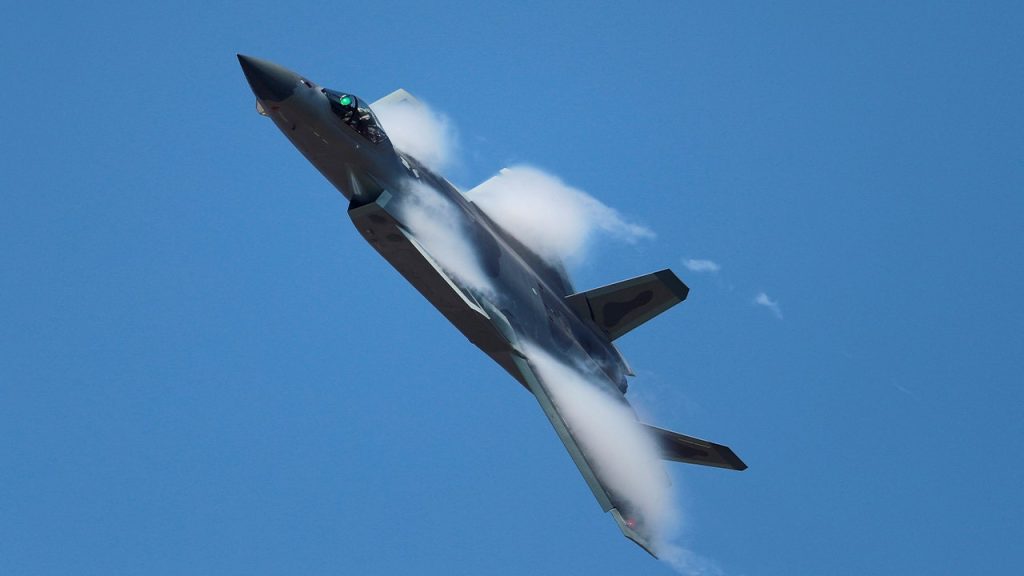The New Air Race: How the U.S. and China Are Transforming Their Air Forces for Potential Pacific Conflict
The skies above the Pacific are becoming the stage for a high-stakes military competition as both the United States and China rapidly modernize their air forces with next-generation aircraft and technologies. The U.S. is advancing with its F-47 fighter and B-21 Raider bomber programs while simultaneously developing AI-enabled drone wingmen. Meanwhile, China is working furiously to overcome historical disadvantages in stealth technology, jet engines, and carrier operations. This technological race isn’t merely about bragging rights—it represents both nations’ strategic calculations about how to maintain or establish air superiority in what could become the most consequential military theater of the 21st century.
America’s air superiority strategy centers on technological sophistication and integration rather than sheer numbers. After a brief program pause in 2024, Boeing received the contract for the F-47, a sixth-generation fighter aircraft expected to take its first flight in 2028. Simultaneously, the B-21 Raider, designed as the stealth successor to the B-2 bomber, is undergoing extensive testing at Edwards Air Force Base, with the Air Force planning to acquire at least 100 of these aircraft specifically engineered to penetrate heavily defended Chinese airspace. Perhaps most revolutionary is the Pentagon’s investment in Collaborative Combat Aircraft (CCAs)—AI-enabled drones designed to operate alongside manned fighters as “loyal wingmen.” Companies including Anduril and General Atomics already have prototypes in the air, with the goal of enabling a single pilot to control multiple drones simultaneously. Despite China’s dominance in commercial drone markets, experts like Eric Heginbotham of MIT’s Center for International Studies maintain that “the U.S. still has a pretty significant edge” in military drone technology, particularly in stealth platforms like the RQ-170 and RQ-180.
China’s air force modernization represents one of the most dramatic military transformations in recent history, focusing intensely on three critical areas that have traditionally constrained its capabilities: stealth technology, jet engines, and aircraft carriers. The Chengdu J-20, China’s premier stealth fighter, is now being equipped with the domestically produced WS-15 engine, designed to rival American powerplants. However, Heginbotham notes that despite progress, “The J-20 really does not have a lot of the performance features that even the F-22 does, and we’ve had the F-22 for a long time.” China achieved another milestone with the commissioning of its third aircraft carrier, the Fujian—the first Chinese carrier featuring electromagnetic catapults similar to America’s advanced Ford-class vessels. This development signals Beijing’s determination to project air power far beyond its shores with carrier-based J-35 fighters. Together, these platforms create a layered defense network that extends China’s air power reach while challenging American regional dominance.
The strategic approaches of both nations reflect fundamentally different military philosophies shaped by their distinct geopolitical positions. The American strategy relies on smaller numbers of highly advanced aircraft networked together through cutting-edge sensors and artificial intelligence, aiming to strike first from long distances and maintain survivability in contested airspace. China’s approach, by contrast, emphasizes volume—mass-producing fighters, missiles, and carrier sorties designed to overwhelm American defenses and logistics networks. This distinction stems partly from necessity; as Mark Cancian, a senior advisor at the Center for Strategic and International Studies, explains: “U.S. fighter aircraft—F-35s, F-15s, F-22s—are relatively short-legged, so they have to get close to Taiwan if they’re going to be part of the fight… So if they’re going to fight, they have to be inside that Chinese defensive bubble.” Both militaries now face the same fundamental challenge: how to ensure their aircraft can survive inside this increasingly lethal environment where missiles and other advanced weapons can threaten even the most sophisticated platforms.
The vulnerability of forward-deployed airbases represents perhaps the most critical weakness in America’s Pacific air strategy. Chinese military doctrine explicitly identifies enemy airfields as priority targets, with PLA campaign manuals calling for concentrated missile strikes against runways early in any conflict to paralyze air operations before they can begin. Analysts believe that just a few days of sustained missile attacks could potentially cripple U.S. bases across Japan, Okinawa, and Guam. As Heginbotham warns, “The ability to protect our aircraft, whatever form those aircraft take, on the ground is going to be central to our ability to fight in the Asia theater.” He describes the U.S. as “criminally negligent in its refusal to harden its air bases,” noting that China, by contrast, regularly “practice runway strikes in exercises” and is actively hardening its own air facilities. This disparity in base resilience could prove decisive in the opening days of any conflict, with Cancian’s war-game findings suggesting that “at the initial stages of a conflict, China would have a distinct advantage,” forcing U.S. surface ships and aircraft to withdraw under missile fire before reinforcements could arrive.
The outcome of this airpower competition will largely depend on budget decisions and technological breakthroughs in the coming years. The Pentagon’s fiscal 2026-27 budget will determine the pace at which the U.S. can develop and deploy its F-47 fighters, B-21 bombers, and drone wingmen—systems that will define American airpower through the 2030s and beyond. While China’s rapid modernization has narrowed what was once a substantial capability gap, the United States maintains advantages in stealth integration, combat experience, and autonomous systems. Yet the fundamental nature of air warfare in the Pacific is changing dramatically, with traditional concepts of dogfighting giving way to a competition focused on survivability, stealth, and the ability to operate effectively within heavily defended airspace. For decades, U.S. air dominance was considered inevitable, almost a law of nature. In the Western Pacific today, that advantage is increasingly contested, creating a new and uncertain military balance with profound implications for regional stability and global power dynamics.


